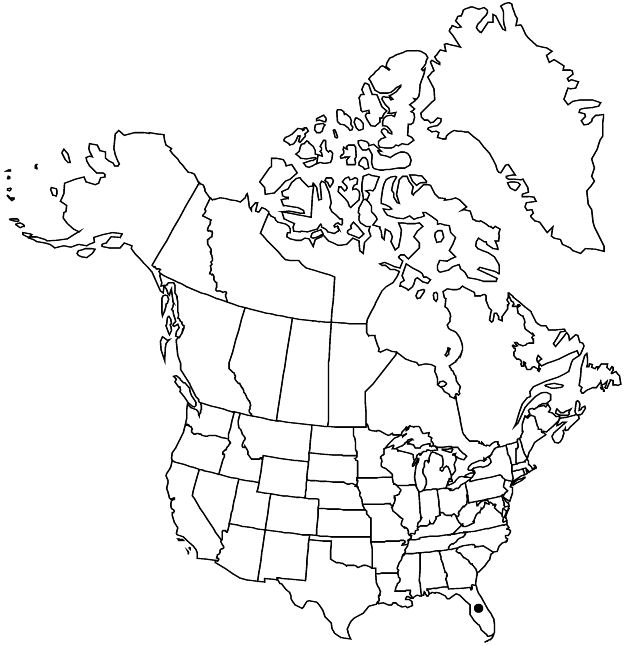Nyssa ursina
Torreya 27: 92. 1927.
Shrubs or trees, 2–5 m, crown typically intricately branched; bark irregularly fissured; twigs usually glabrous, rarely puberulent. Leaves: petiole (4–)5–9 mm; blade narrowly elliptic to oblanceolate, rarely to ovate, 3–7 × 1–2 cm, coriaceous, base cuneate to rounded, margins entire, apex obtuse, abaxial surface glabrous or puberulent (primarily along veins), adaxial surface glabrous. Inflorescences: peduncle 3.2–5.5 cm, sparsely hairy or glabrous; staminate (1–)2–5-flowered, pistillate and bisexual 1–2-flowered. Staminate pedicels present. Flowers: ovary glabrous. Drupes usually black, rarely blue, glaucous, globose, 7–11 mm, smooth; stone 6–8 mm, with several low, rounded longitudinal ridges.
Phenology: Flowering spring.
Habitat: Open savannas, depressions in flatwoods.
Elevation: 0–70 m.
Distribution

Fla.
Discussion
Nyssa ursina is limited to six counties in the panhandle region of Florida. It occurs together with N. biflora throughout its limited range, which supports recognizing it as a distinct species.
Selected References
None.